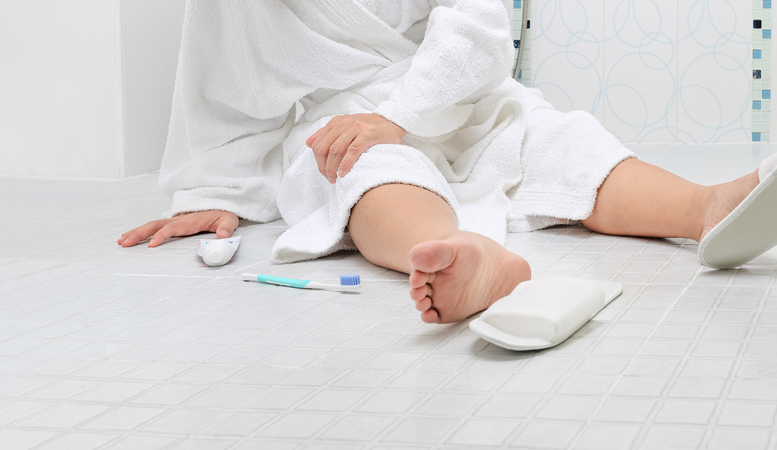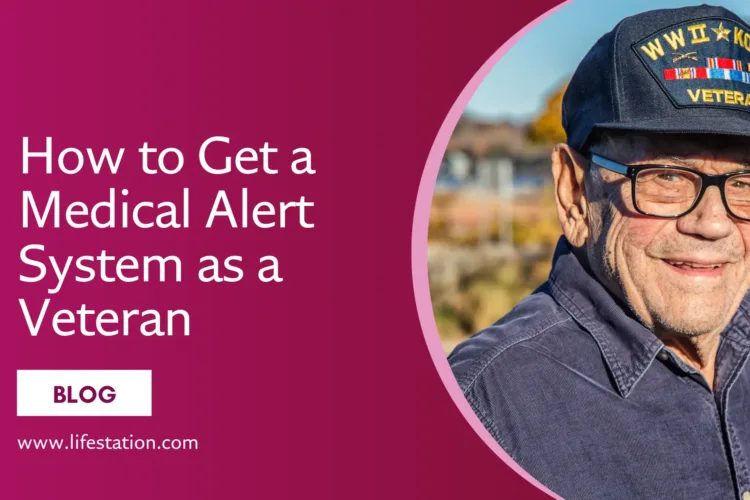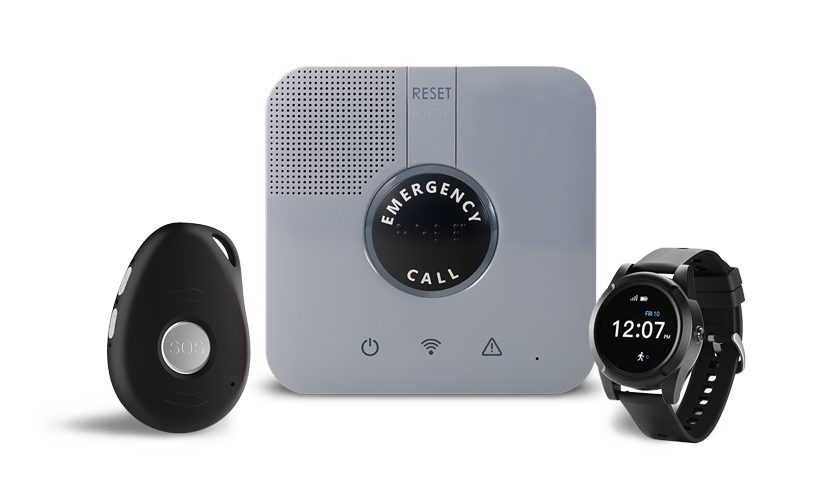Peace of Mind & Independence is One Call Away
(888) 493-1475 - Click to Call get a FREE MONTH of service.

Understanding how to prevent falls in elderly at home is essential for creating a safer living environment. Simple changes can make a big difference in reducing fall risks and helping seniors stay independent. In this guide, we’ll share practical tips on how to prevent falls in elderly at home by removing obstacles and making key adjustments to daily surroundings.
When a 20-year-old falls and breaks a leg, chances are they will get a cast and crutches and be on their way. If a 75-year-old falls and breaks a leg, Dr. Barry Coplon, of Kaiser Permanente, said the damage and recovery time will likely be a lot more substantial.
“When you are older and break a leg during a fall, you are likely going to need surgery,” said Coplon, who works in internal medicine at the North Lancaster Medical Office in Salem. “As we get older, it’s more likely that with surgery comes the risk of more infection, possibility an extended hospital stay. Falls are preventable, and it takes being proactive to do that.”
According to the National Council on Aging (NCOA), falls are the leading cause of fatal and non-fatal injuries for older Americans. According to the Centers for Disease Control, every 13 seconds an older adult is treated in the emergency room for a fall. Every 20 minutes, an older adult dies from a fall. There are an estimated 2.5-million injuries related to falls each year.
However, according to the NCOA, falling is not an inevitable result of aging. Through lifestyle adjustments, evidence-based falls prevention programs, and community partnerships, the number of falls among seniors can be reduced.
Awareness is a key factor in preventing falls. In order to identify any risk factors, seniors are advised to do the following:
- Get regular eye exams
- Go through regular balance and gait testing
- Have regular blood pressure checks
- Have a podiatrist provide regular foot exams
- Always review all medications with the doctor whether they are over-the-counter or prescribed
When it comes to managing fall prevention, Coplon said there are three major areas that he discusses regularly with aging patients:
- Medication- Coplon said that from taking one prescription drug, to mixing several, a patient should always understand the side effects of all drugs they are taking and whether or not they could impact cognitive function, balance or make a patient feel dizzy. However, medication isn’t only about what a doctor prescribes. Coplon said a common myth is that over-the-counter drugs won’t create symptoms that could lead to balance problems. Many of the over-the-counter drugs that commonly cause concern are antihistamines and nighttime medications. “Any of those PM-type drugs can cause a senior citizen to have balance issues during the day,” Coplon said. “Patients should be discussing all of the medications they are taking with their doctor as a precaution.”
- Evaluating obstacles- Coplon said taking this step is probably one of the most important steps to take before balance issues even occur. This means clearing pathways in the home and taking away small things that could cause a fall such as throw rugs.
- Nighttime bathroom trips- Coplon said when one of his patients falls and gets injured, it is not uncommon for them to say it was during a trip to the bathroom at night. “The house is dark, you get up and there’s something on the floor, or you can’t see well and the next thing you know, you fall,” Coplon said. “This is an area I really talk to patients about. Make a clear path to the bathroom. Remove rugs and anything on the floor. Keep a light on, or get a night light to make it easier to see.”
When discussions begin
The topic of fall prevention really starts coming up around the age 65. Coplon said he starts discussing safety issues and health issues that can be associated with a fall as his patients reach 65 and beyond. “We begin those routine discussions at 65, but I really look at it through those 10-year markers,” Coplon said. “By the age of 75, there is a substantial concern of patients falling. Balance issues come up, issues with medication come up, physical activity sometimes decreases and this is the age where it really is an issue to take into account. By age 85, it would be surprising if having issues and symptoms that could result in a fall aren’t present.”
Friends, family and caregivers are also advised to stay alert of the possible danger signs. If someone is struggling just to get through day-to-day activities, Coplon said interaction may be needed. “It’s all about taking that basic, functional assessment,” he said. “Is the patient getting dressed without a problem? Are they going to the bathroom without assistance or complaint? Are they running regular errands?”
A true sign of a problem is when the grocery store becomes hard for the aging adult. If a person complains that it is too difficult to go to the grocery store or run a simple errand, there is reason to be concerned.
“Once they start complaining about struggling to go to the grocery store, they will likely stop going altogether,” he said. “They stop trying to get around and get out. That impacts overall quality-of-life and overall health and nutrition. When nutrition goes down, the danger of falling increases. And, if no one is watching and being proactive, the patient can go downhill fast.”
With one in three adults over 65 suffering injuries from a fall each year, local health organizations continue to recommend not only regular discussions with doctors , regular exams and home safety, but also having senior citizens enroll in programs to stay in good physical health. Those programs can be anything from yoga, to walking, physical therapy and others aimed at fall prevention. See our blog on 5 reasons to have a fall detection device for more information.
Get the Best in Medical Alert Services Now
Request Medical Alert Information
By clicking the Request Brochure button above, you are providing an electronic signature certifying that our company and our affiliates have your consent to contact you at the provided telephone number using an autodialer or prerecorded message in accordance with our Terms of Use. Please note that you are not required to purchase anything from the companies that may contact you. Healthcare providers and anyone interested in getting more information about working with LifeStation, please contact LifeStation business development. By entering an email address, you agree to receive emails periodically from LifeStation. You can unsubscribe from these emails at any time. LifeStation.com will never sell, trade, rent or give away your personal information without your permission. We value and respect your trust in us.

